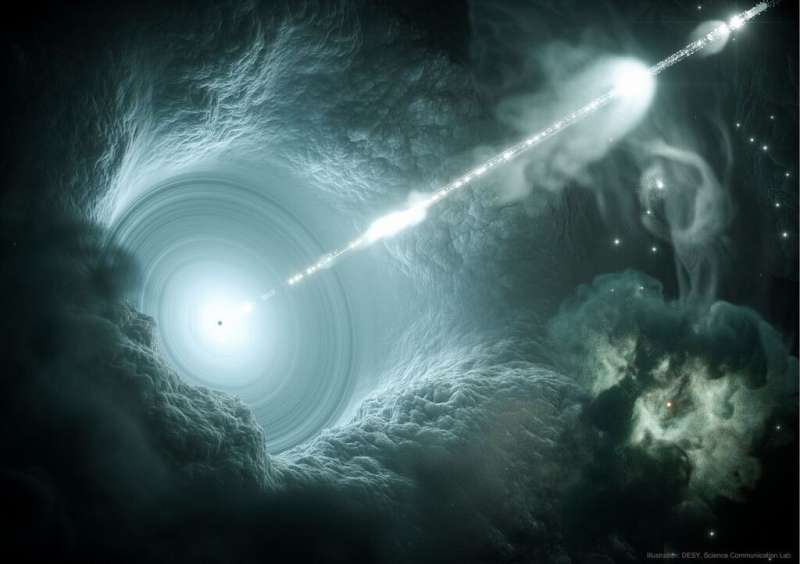This article has been reviewed according to Science X's editorial process and policies. Editors have highlighted the following attributes while ensuring the content's credibility:
fact-checked
trusted source
proofread
Using the shadows of clusters to measure the universe

Astronomers have begun using a sophisticated suite of simulations, an advanced machine learning model of the formation of galaxy clusters, and an exotic relationship between galaxies to understand the origins of dark matter and dark energy.
I'm guessing that you've never heard of the Sunyaev Zel'dovich effect, and that's perfectly fine. It's a relatively obscure cosmological trick to make maps of galaxies, groups and clusters. The effect is named after two Russian scientists who first figured out the mechanism. The effect works because our universe is soaked in the cosmic microwave background, the leftover radiation form when are universe was only 380,000 years old. That radiation is relatively cool, with a temperature of around 3 degrees above absolute zero, which puts the radiation in the microwave regime.
As that ancient light filters its way through the cosmos on our way to our telescopes, occasionally it will pass through a group or cluster of galaxies. These clusters and groups have very hot gas floating around inside of them. Sometimes that gas will hit a passing photon from the cosmic microwave background and boost it up to a higher energy. When we make maps of the cosmic microwave background we then see groups and clusters as slightly hot little splotches on top of the background. This technique allows us to map incredibly distant clusters and groups, even those that are too far away to directly observe through other means.
Astronomers and cosmologists would love to use these surveys to understand the distribution of matter in the universe, which can help us unlock the natures of dark matter and dark energy. But clusters and galaxies are incredibly complicated places, and we need to understand all the physics that makes the gas inside of clusters and groups hot before we can use them to tease out dark matter and dark energy. One of the most important processes is feedback, where material falls onto supermassive black holes, but before it gets swallowed up it gets ejected in the form of high energy particles and blasts of radiation out into the group and cluster environment.
Cosmologists have long used highly detailed simulations of these effects to understand what's going on. But to really build a reliable model of the universe we need many different simulations with many different kinds of parameters to explore all possibilities. And then we need to connect all those different possibilities to what we observe and use that to tease out properties of dark matter and dark energy.
To achieve that last step a team of researchers have used the CAMELS suite of simulations, along with a sophisticated machine learning algorithm, to connect dark matter and dark energy properties to what we actually observe in the universe with the Sunyaev Zel'dovich effect. They are just now beginning to make those links to real observations using the Dark Energy Survey telescope in the Atacama Cosmology Telescope. The hope is that future research along these lines will provide a crucial window into the nature of these dark mysteries of the universe.
Provided by Universe Today




















